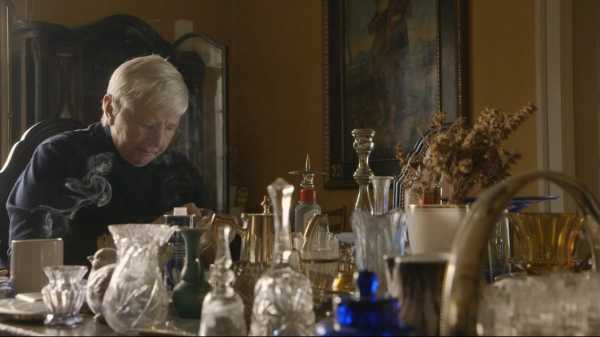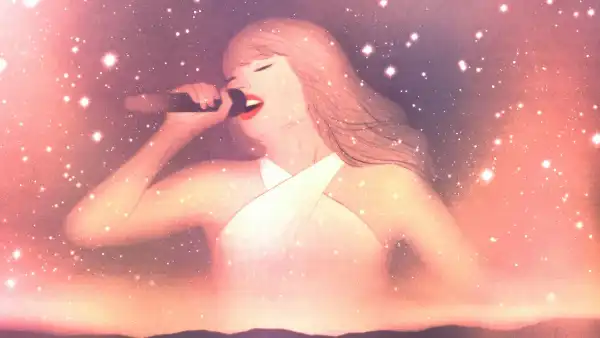
A crucial and often overlooked element of documentary filmmaking is standpoint: not the filmmaker’s abstractly intellectual point of view but her physical and visual one—her personal, experiential relationship to her subject. Mila Turajlić’s documentary “The Other Side of Everything,” which opens Friday, gets its energy and its inspiration from a clear sense of place: she filmed it in the Belgrade apartment in which she grew up; her subject is her mother, Srbijanka Turajlić, a retired professor, political activist, and, briefly, political official; and the film’s starting point is a set of doors in the apartment that neither mother nor daughter has ever looked behind.
They were closed and sealed, shortly after the Second World War, by an official of Yugoslavia’s new Communist regime, who partitioned the family’s spacious apartment and installed other residents behind them. The subject of “The Other Side of Everything” is Srbijanka’s political activity, centered on her resistance to Slobodan Milošević’s repressive and genocidal post-Yugoslav regime and the price that she is still paying for her activism. More broadly, the movie looks at the collapse and dissolution of Yugoslavia, the wars and slaughters that followed, and the fragile efforts to create a democratic resistance and then a modern democracy in Serbia, to replace the ruins of Milošević’s regime.
The movie’s central metaphor, of the apartment’s doors, reflects the suppression of dissent in the forty years of the Communists’ one-party dictatorship and the resulting one-sided mind-set, which comes off as the original sin of modern Yugoslav history and a still-crucial obstacle to democratic modernity. But the specifics of “The Other Side of Everything” far overleap the facts of regional politics; the movie is, in effect, a film of political philosophy, not only in Srbijanka’s trenchant, stirring, and tragic observations, but in its ever-relevant observation of the endemic reactionary counterweight to political progress: populist ethnocentrism and nationalism.
“The Other Side of Everything” is all the more depressing and resonant inasmuch as Yugoslavia was, like the United States, explicitly founded on the idea and the ideal of diversity. It was founded, in 1918, as the Kingdom of Serbs, Croats, and Slovenes—and the filmmaker’s great-grandfather, Dušan Peleš, was one of the signers of the constitution of national unification. (He’s depicted in a group painting made of the seminal event; the fate of that painting, hidden and even denied by the Yugoslav government in an effort to rewrite history, figures wryly and ironically in the film. He also commissioned the building in which the family lives and in which the film was made.)
As American institutions begin to collapse, with the complicity of a craven legislative pseudo-majority contrived through voter suppression, gerrymandering, corrupt manipulations, and propaganda—but also with the support of a significant segment of the American population—and as European countries yield to the temptations of nationalism, the story of Srbijanka Turajlić’s resistance, and the ongoing impediments to progress, reflect with an unmistakable and disturbing clarity both the pathologies of current American politics and the depressingly difficult path that the resistance to an authoritarian government faces.
Mila films in her mother’s apartment but also films from the perspective of the apartment. The movie was filmed in 2015, in the run-up to, and aftermath of, Serbia’s elections, and present-day politics figure as strongly as the enduring force of the past. From the window above a street in central Belgrade, she films protests and the responses of the police, including the unleashing of tear-gas cannisters. (“The Other Side of Everything” would make a good pairing with Sara Fattahi’s documentary “Coma,” from 2015, yet unreleased here, filmed in her mother’s apartment in Damascus.) Srbijanka Turajlić’s presence, and her clear, husky voice dominate the film; she’s sought for interviews, she’s seen giving some, she talks with her daughter, and she’s seen in astounding archival footage of television appearances and, above all, at public demonstrations in times of great danger.
Srbijanka Turajlić’s family story helped to set her on the path of activism. The daughter and granddaughter of lawyers, she was dissuaded by her anti-Communist parents from following in their footsteps, because the law had become politicized. Instead, Srbijanka (who was born in 1946) became a professor of engineering. While participating in student protests against the government in 1968, she was outraged that professors didn’t demonstrate alongside them. In her youth, Srbijanka also, she says, reproached her parents for not daring to taking action against a regime they opposed; she herself decided to take the risks. As a professor, she took part in, even led, demonstrations—and it’s among the movie’s most moving moments when Mila expresses wonder and admiration at her mother’s powers of public speaking, and Srbijanka responds that she considers it simply part of her role as a professor. Her observations on the breakup of Yugoslavia as a result of Milošević’s bellicose, authoritarian nationalism are powerful. She and a diverse group of longtime friends from the various parts of former Yugoslavia analyze the breakup in detail, and Mila offers precisely chosen archival clips to bring history onscreen.
“You don’t know how a war begins, especially a civil war,” Srbijanka comments. You don’t believe it can begin, until it begins.” When it began—in 1991, when Slovenia and Croatia seceded from a Milošević-dominated Yugoslavia (she recalls seeing tanks on the highway in Belgrade, rolling toward Croatia, as bystanders cheered)—she said, “You ask yourself, who have you been living with all these years?” The first flush of protest against the regime was student protest in opposition to the war in which many were being drafted to fight against their beliefs. When one of Srbijanka’s students spoke to her about the need to protest, she filed for the permit in her own name.
Despite government hostility and violence, protests mounted. Srbijanka addressed a huge rally in 1996 where, she said, she couldn’t see to the end of the crowd, which she found “terrifying.” The family’s phone was bugged, government spies were posted outside their home; in 1999, she was fired from her teaching job. But in 2000 a crowd of more than a half-million people stormed Parliament and brought down the government. Archival footage shows the building in flames, looters removing furniture, and passersby reproaching the looters for besmirching the revolution.
Under the new, democratic government, Srbijanka became the Minister of Education and remained in office for several years. She considers the revolution to be a failed one, because the nationalist sentiment that Milošević stoked remains prevalent—and in power. The thrill of overthrowing a dictator led to the disillusionment of discovering that the political pathologies that he both exploited and deepened were, and are, still raging. (One oddity of the film is that it doesn’t address the presence in Serbia of the perpetrators of war crimes whose deeds are unacknowledged, let alone unpunished.) The 2015 election, as the movie shows, resulted in the triumph of a politician who’d been a minister in Milošević’s regime. “The Other Side of Everything” is a story of a bitter paradox: the urgency of political action in the face of injustice and the uncertainty that significant progress will result.
Srbijanka’s sense of political responsibility is intensely personal. She blames herself and her generation for having attempted to live as happily as possible in indifference to the oppressions of the Communist era: “We were living in a parallel reality, which I think is a danger your generation is also in as you build your lives outside the system. In building your life by ignoring the circumstances you fail to see the moment those circumstances change dramatically.” She calls for unrelenting political vigilance and activism; she can’t wish a crowd a happy new year because, she says, “our happiness depends on ourselves, to be brave, to take responsibility, to find moral courage.” She tells Mila, “You can live here only if you switch off,” yet she calls for Mila to make the effort, if she can, to bring about change.
Nonetheless, despite having taken action and brought about change, she remains pessimistic about the prospect of progress. Not to give away the ending, but, in the wake of the 2015 election, she was placed on a far-right group’s list of thirty “biggest Serb-haters and traitors” and was summoned to court to face charges that included “Supports the American concept of civil rights, meaning gay pride parades, destroying the institution of the family, and the ruin of patriarchal society.” Which is to say that, by the movie’s end, the opening of long-sealed doors is a grotesque and depressing anticlimax; the metaphor is stood on its head, and out come old monsters.
Sourse: newyorker.com






